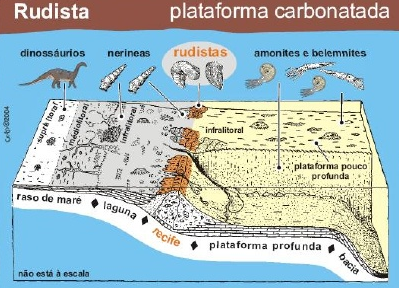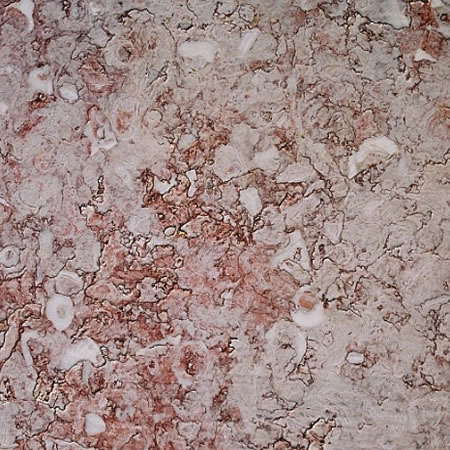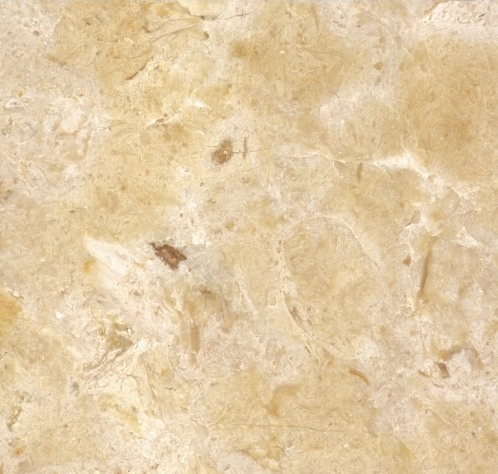A Fortaleza de Santa Cruz ou simplesmente Fortaleza de Anhatomirim, foi a principal fortificação do antigo Sistema Defensivo da Ilha de Santa Catarina. Estrategicamente localizada na Ilha de Anhatomirim, em Governador Celso Ramos, Santa Cruz configurava no século XVIII o principal vértice do sistema triangular de defesa da Baía Norte, que protegia a Ilha de Santa Catarina contra as investidas estrangeiras.
A arquitetura da Fortaleza é tipicamente portuguesa, pois foi projetada e construída pelo Brigadeiro português José da Silva Paes, a partir de 1739. Nela existem alguns elementos arquitetônicos construídos em lioz, nomeadamente padieiras ornamentais, arcos e uma escadaria. A pedra lioz foi transportada de Lisboa para diversas regiões do Império Português, Anhatomirim foi uma delas.
The Fortress of Santa Cruz or simply Fortaleza de Anhatomirim, was the main fortification of the old Defensive System of the Island of Santa Catarina. Strategically located on the Island of Anhatomirim, in Governador Celso Ramos, Santa Cruz was in the 18th century the main apex of the triangular defense system of the North Bay, which protected the Island of Santa Catarina against foreign invaders.
The architecture of the Fortress is typically Portuguese, since it was designed and built by the Portuguese Brigadier José da Silva Paes, from 1739. There are some architectural elements built in Lioz, namely ornamental lintels, arches and a staircase. The Lioz stone was transported from Lisbon to several regions of the Portuguese Empire, Anhatomirim was one of them.
O Lioz e os Rudistas
O lioz é um tipo raro de calcário que ocorre em Portugal, na região de Lisboa e nos seus arredores (norte e noroeste), nomeadamente em Sintra. O lioz é um calcário compacto formado há cerca de 97 milhões de anos durante o período Cretáceo da era Mesozóica. Esta rocha apresenta grande abundância de fósseis, dos quais se destacam lamelibrânquios construtores de bancos de recifes designados de rudistas.
Lioz is a rare type of limestone that occurs in Portugal, in the region of Lisbon and its surroundings (north and northwest), namely in Sintra. Lioz is a compact limestone formed about 97 million years ago during the Cretaceous period of the Mesozoic era. This rock presents a great abundance of fossils, of which stand out lamelibranchs builders of banks of reefs called rudists.

Os rudistas são um grupo extinto de bivalves que existiu desde o Jurássico Superior até ao final o Cretácio da Era Mesozóica, altura em que ocorreu a extinção K-T, uma extinção em massa que teve um enorme impacto na biodiversidade da Terra e vitimou boa parte dos seres vivos da época, incluindo os dinossauros e outros répteis gigantes.
Os rudistas eram organismos sedentários e viviam em mares tépidos e pouco profundos, fixando-se uns aos outros e constituindo verdadeiros recifes, por vezes de grandes dimensões.
Uma das particularidades dos rudistas era o grande desenvolvimento e a espessura das suas conchas, constituídas por duas valvas. Uma das valvas apresentava um grau de desenvolvimento muito acentuado e podia ser cónica ou em forma de chifre, enquanto a outra funcionava como uma tampa.
Rudists are an extinct group of bivalves that existed from the Upper Jurassic to the end of the Cretaceous of the Mesozoic Era, at the time of extinction KT, a mass extinction that had a huge impact on the Earth's biodiversity and killed many of the beings Of the time, including dinosaurs and other giant reptiles.
Rudists were sedentary organisms and lived in warm and shallow seas, fixing each other and constituting real reefs, sometimes of great dimensions.
One of the peculiarities of the rudistas was the great development and the thickness of its shells, constituted by two valves. One of the leaflets had a very pronounced degree of development and could be conical or horn shaped, while the other operated as a cap.


As conchas destes bivalves apresentavam um aspecto rude (rudis, em latim) o que deu origem ao seu nome – Rudistas. A presença de fósseis de rudistas nas rochas carbonatadas da região de Lisboa é um testemunho da existência neste local de um antigo mar tropical costeiro, pouco profundo, de águas quentes e límpidas, com fundos formados por lama carbonatada. Durante o Cenomaniano, a Península Ibérica estava localizada a atitudes mais baixas do que atualmente, mais próximas do equador e, portanto, numa região mais quente. A atual península ficava, nessa altura, nos limites do Mar de Tétis, o mar que se formou após a ruptura da Pangea e que deu origem ao atual Mediterrâneo. Nestas águas tropicais quentes, a partir dos 26 – 28º C, o carbonato de cálcio (CaCO3) precipitava espontaneamente e originou vasas (lamas) carbonatadas que, posteriormente, geraram os calcários que encontramos na atualidade.
The shells of these bivalves presented a rough aspect (rudis, in Latin) that gave rise to its name - Rudistas. The presence of fossils of rudists in the carbonate rocks of the Lisbon region is a testimony to the existence of an ancient tropical coastal sea, shallow, with warm, clear waters, with muddy bottoms. During the Cenomanian, the Iberian Peninsula was located at lower attitudes than at present, closer to the equator and, therefore, in a warmer region. The present peninsula was, at that time, in the limits of the Sea of Tetis, the sea that formed after the rupture of Pangea and that gave origin to the present Mediterranean. In these hot tropical waters, from 26-28 ° C, calcium carbonate (CaCO3) precipitated spontaneously and gave rise to carbonate vats (muds) that later generated the limestones we find today.

Formação do Calcário de Lioz / Formation of Lioz Limestone
Um calcário de origem marinha, como é o lioz, forma-se pela precipitação de minúsculos grânulos de carbonato de cálcio (micrite), a partir de águas quentes sobressaturadas. O ambiente de deposição pode encontrar-se mais ou menos próximo da linha de costa, sem que seja afetado por sedimentos provenientes do continente.
No que diz respeito à componente fóssil observada no calcário lioz, ela reflete os organismos que viviam em cada um dos ambientes de formação das litologias a eles associadas.
A limestone of marine origin, such as lioz, is formed by the precipitation of tiny granules of calcium carbonate (micrite), from hot waters over-saturated. The deposition environment may be more or less close to the coastline, without being affected by sediments coming from the mainland.
With regard to the fossil component observed in limestone lioz, it reflects the organisms that lived in each one of the environments of formation of the lithologies associated to them.
Características do Calcário de Lioz / Characteristics of Lioz Limestone
A cor dos diferentes calcários é uma característica marcante que nos dá informações relativas ao ambiente de deposição dos sedimentos que lhes deram origem. Desta forma, o calcário claro com Rudistas indica um ambiente aquático, oxidante, de pequena profundidade e forte energia hidrodinâmica. O calcário rosa com Rudistas continua a indicar um ambiente aquático, oxidante, refletindo a presença de óxidos de ferro.
The color of the different limestones is a striking feature that gives us information about the sediment deposition environment that gave rise to them. In this way, light limestone with Rudistas indicates an aquatic, oxidizing, small depth and hydrodynamic energy environment. The pink limestone with Rudders continues to indicate an aquatic, oxidizing environment, reflecting the presence of iron oxides.




O calcário lioz apresenta uma textura característica e o que, à primeira vista, parecem veios magmáticos, são na realidade secções da concha fossilizada de organismos que viveram há milhões de anos em mares, entretanto desaparecidos.
The limestone lioz presents a characteristic texture and what, at first glance, they look like magmatic veins, are in fact sections of the fossilized shell of organisms that have lived millions of years in seas, meanwhile disappeared.
O registro / The log
Para poder fazer o seu registro, você deve enviar para mim uma mensagem, com a resposta ás seguintes perguntas:
- Explique o que é um fóssil rudista.
- Sob que formas se apresentam os rudistas?
- De que era provém os fósseis rudistas?
- Qual o aspecto dos rudistas?
- Observando, no way point 1 (depois de passar o pórtico, em frente á Casa do Comandante) está um objeto em Lioz, responde às seguintes questões:
- Quanto a sua coloração, qual o ambiente onde este lioz se formou?
- Estime o comprimento do “objeto” de pedra de lioz.
- Opcionalmente pode colocar uma foto na escadaria da fortaleza junto dos degraus de lioz.
To be able to register, you must send me a message, with the answer to the following questions:
- Explain what a rudimentary fossil is.
- In what ways are the rudists present?
- What was Rude fossils from?
- What do rudists look like?
- Observing, on way point 1 (after passing the portico, in front of the Commander's House) is an object in Lioz, answers the following questions:
- As for its coloring, what is the environment where this lioz was formed?
- Estimate the length of the "object" of lioz stone.
6.Optionally you can put a photo on the staircase of the fortress along the lioz steps.